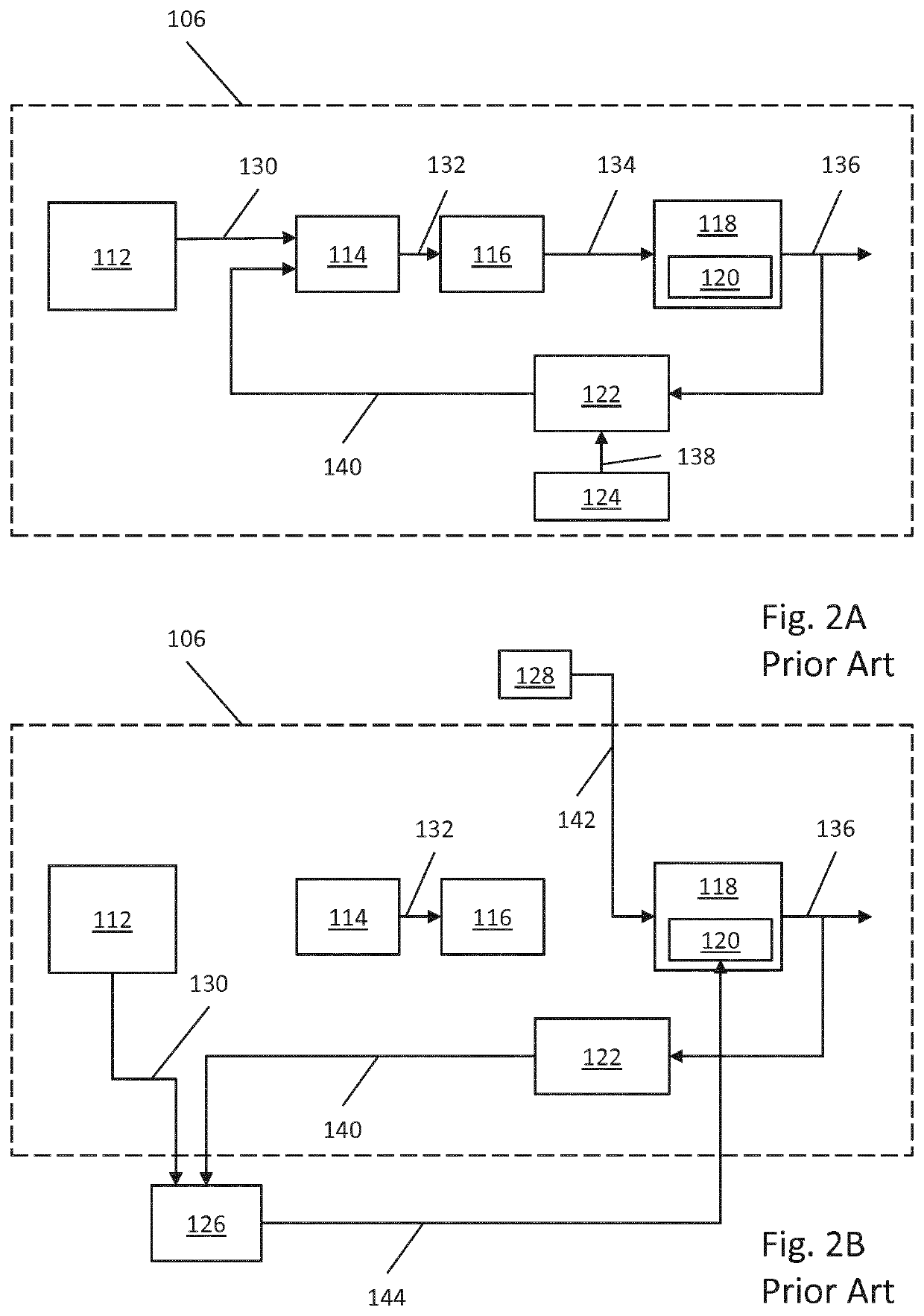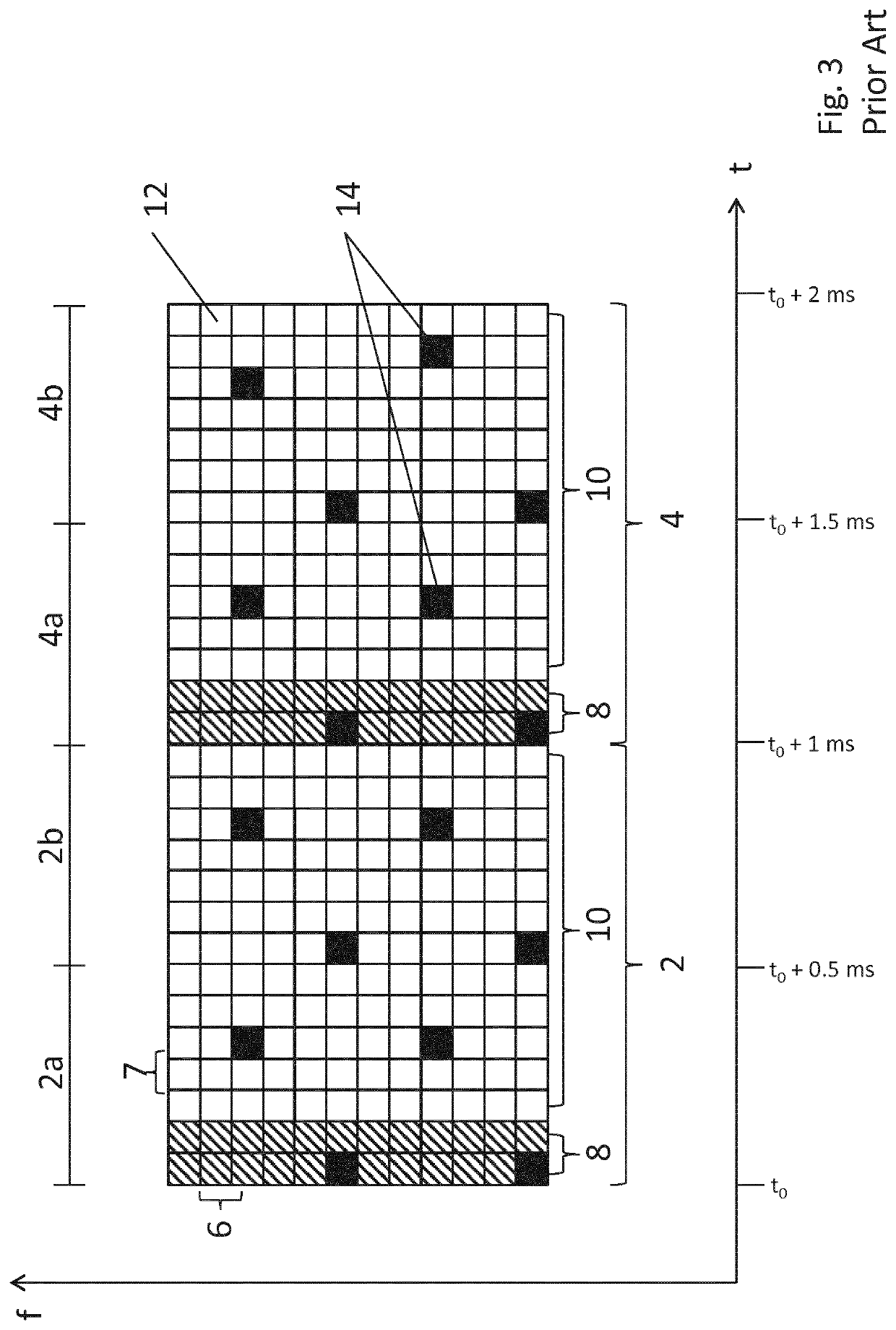Calibration of a synthesiser in a radio receiver
a synthesiser and radio receiver technology, applied in the direction of multiplex communication, machine-to-machine/machine-type communication service, orthogonal multiplex, etc., can solve the problem of inability to guarantee the frequency change of the synthesiser in a single step, the undetermined transient state of the vco,
- Summary
- Abstract
- Description
- Claims
- Application Information
AI Technical Summary
Benefits of technology
Problems solved by technology
Method used
Image
Examples
Embodiment Construction
[0065]FIG. 1 is a block diagram of a typical LTE eMTC receiver 100, known in the art per se. The receiver 100 comprises: an antenna 102; a low-noise amplifier (LNA) 104; a frequency synthesiser 106; a mixer 108; and a demodulation module 110. Those skilled in the art will appreciate that this is a highly simplified overview of a practical system, which would typically contain many subsystems.
[0066]Signals received via the antenna 102 are passed through the LNA 104 which amplifies the signals before inputting them to the mixer 108. The mixer 108 also takes as an input a signal produced by the frequency synthesiser 106 in order to down-mix the received signals from the transmission frequency to baseband frequency suited to further processing by the demodulation module 110.
[0067]In order to change between different radio channels, for example during a frequency hopping process, the frequency synthesiser 106 can be tuned to change the frequency of the signal it produces that is input to...
PUM
 Login to View More
Login to View More Abstract
Description
Claims
Application Information
 Login to View More
Login to View More - R&D
- Intellectual Property
- Life Sciences
- Materials
- Tech Scout
- Unparalleled Data Quality
- Higher Quality Content
- 60% Fewer Hallucinations
Browse by: Latest US Patents, China's latest patents, Technical Efficacy Thesaurus, Application Domain, Technology Topic, Popular Technical Reports.
© 2025 PatSnap. All rights reserved.Legal|Privacy policy|Modern Slavery Act Transparency Statement|Sitemap|About US| Contact US: help@patsnap.com



